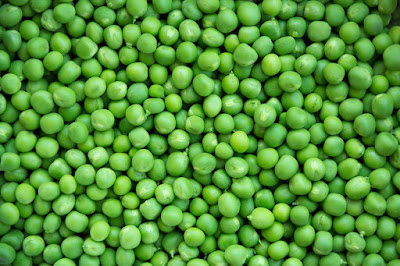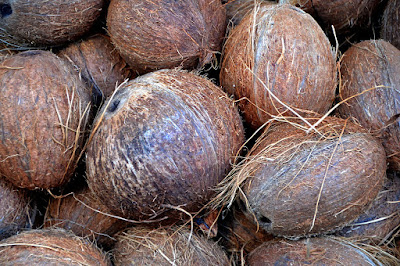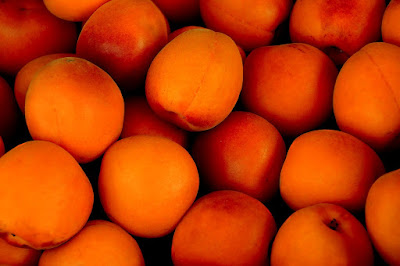It has been a while since an update and the reason has been unprecedented work (from my day job). I promise to be back as soon as possible. Please bear with me.
Interesting facts about spices, vegetables and fruits. History, production and usage trivia.
Tuesday 25 October 2016
Saturday 15 October 2016
5 interesting facts about Bottle Gourd
1. Bottle Gourd is native to
Africa.
2. One of the first
cultivated plants in the world, the initial use was not as a food but as a container
to hold water!
3. Bottle gourd contains cucurbitacins that are known to be cytotoxic at a high concentration.
4. A variety of bottle gourd
is used as the resonator in the making of stringed Indian musical instruments
like the Sitar and the Veena.
5. In Nigeria, round bottle
gourds (called calabashes) have been used to avoid a law requiring the wearing
of a helmet on a motorcycle.
Friday 14 October 2016
5 interesting facts about Peas
1. Peas are presumed to be native
to Mediterranean region.
2. Botanically, peas are
actually a fruit, although they are classified as a vegetable.
3. China is the world’s
largest producer of peas followed by India.
4. Favabeanism is a genetic
condition related to pea consumption that affects Jews and other Middle Eastern
Semitic people.
5. Pea milk is commercially
produced alternative to cater to people who cannot consume dairy, soy, nut and
gluten products.
Thursday 13 October 2016
5 interesting facts about Ginger
1. Ginger is native to Southern
Asia.
2. Although normally
classified as a root, Ginger is actually a rhizome.
3. India is the world’s
largest producer of Ginger followed by China.
4. Ginger has a sialagogue action, stimulating the
production of saliva, which makes swallowing easier.
5. When ginger is pickled in
sweet vinegar, it turns pink. This is the ginger often seen accompanying sushi.
Wednesday 12 October 2016
5 interesting facts about Garlic
1. Garlic is native to Central
Asia.
2. Close relatives of garlic
include the Onion, shallot, leek, chive and rakkyo.
3. China is the world’s
largest producer of Garlic followed by India.
4. While the bulb is the
primary edible part of Garlic, sometimes, the leaves, flowers and head are also
eaten.
5. Due to its antimicrobial
properties, garlic along with cinnamon is used as a fish and meat preservative.
Tuesday 11 October 2016
5 interesting facts about Coconut
1. The Coconut is native to India.
2. The coconut fruit is
actually a drupe and not a nut as the name indicates.
3. Indonesia is the world’s
largest producer of coconuts, followed by the Philippines.
4. It is said that coconuts
can travel a 110 days or 3,000 miles at sea and still be capable of
germination!
5. Virtually every part of
the coconut tree can be used by humans in some manner and has significant
economic value. This is probably why it is called kalpa vriksha (the tree that provides everything) in Sanskrit and pokok seribu (the tree of a 1,000 uses)
in Malay.
Monday 10 October 2016
5 interesting facts about Tamarind
1. Tamarind is native to tropical
India and Africa.
2. India is the world’s
largest producer of tamarind followed by Latin America.
3. Despite being a fruit, the
tamarind has a high proportion of calcium!
4. Tamarind contains tartaric
acid. This makes it an excellent agent for metal polishing for copper, bronze
and brass vessels and utensils.
5. In some parts of Ghana,
tamarind pulp is used to make some poisonous yams edible!
Sunday 9 October 2016
5 interesting facts about Asparagus
1. Asparagus is native to Europe.
2. China is the world’s
largest producer of asparagus followed by Peru.
3. Asparagus is said to be a
useful companion plant for tomatoes.
4. Many German cities hold an
annual asparagus festival. The city of Schwetzingen also crowns an annual "Asparagus Queen!"
5. Emperor Augustus is
credited with having created the "Asparagus Fleet" for hauling the
vegetable in ancient times.
Saturday 8 October 2016
5 interesting facts about Barley
1. Barley is native to Eurasia.
2. As far as cereal crops go,
barley is at position four – both in terms of quantity produced as well as area
under cultivation.
3. Russia is the world’s
leading producer of Barley followed by Germany.
4. It is said that the
Prophet Muhammed prescribed barley as the cure for seven diseases.
5. Till the 19th
century, barley grains were used as a measurement in England!
Friday 7 October 2016
5 interesting facts about Coffee
1. Coffee is native to tropical
Africa.
2. Coffee is slightly acidic
and has a stimulating effect on humans because of its caffeine content.
3. Brazil is the world’s
largest producer of coffee followed by Vietnam.
4. Coffee was initially used
for spiritual reasons.
5. Johann Sebastian Bach was
inspired to compose the Coffee Cantana due to his dependence on the beverage!
Thursday 6 October 2016
5 interesting facts about Tea
1. Tea is native to China
2. After water, Tea is the
most widely consumed drink in the world.
3. China is the world’s
largest producer of Tea, followed by India.
4. Tea is sensitive to and easily
retains odors. This is both a blessing and a curse. Curse because it needs care
during processing and packing and a blessing because of the ease of infusing
various flavors.
5. The flavor of tea can be
altered by pouring it from different heights, which results in varying degrees
of aeration.
Wednesday 5 October 2016
5 interesting facts about Soybean
1. Soybean is native to East
Asia
2. Soybean produces more significantly
more protein per acre than any other agricultural product.
3. The United States is the world’s
leading producer of Soybean followed by Brazil.
4. Soybeans are also used in
industrial products, including oils, soap, cosmetics, resins, plastics, inks,
crayons, solvents, and clothing.
5. In 1936, the Ford Motor
Company used a mixture of Soybean and fibers were rolled together and pressed
to form various automobile components.
Monday 3 October 2016
5 interesting facts about Carrots
1. Carrots are said to be native
to Central Asia.
2. China is the world leader
in the production of carrots followed by Uzbekistan.
3. Although usually orange in
color, some naturally occurring species can be purple, black, red, white or
yellow!
4. Spices like parsley,
fennel, dill and cumin are close relatives of the carrot.
5. Excessive consumption of
carrots over a period of time results in a condition called carotenemia characterized by a yellowing
of the skin.
Sunday 2 October 2016
5 interesting facts about Cauliflower
1. Cauliflower is said to be native
to Italy.
2. China is the world’s
largest producer of Cauliflower followed by India.
3. Apart from the regular
white, naturally occurring species of cauliflower include orange, green and
purple varieties!
4. Cauliflower has fractal
dimension properties – due to which, every branch or module is similar to the
entire cauliflower!
5. Cauliflower can be turned
into flour from which pizza or biscuits are made!
Saturday 1 October 2016
5 interesting facts about Apricots
1. Apricots are said to be native
to Armenia.
2. Turkey is the world’s
largest producer of apricots followed by Iran.
3. Black or Purple Apricots
are actually a hybrid of an apricot and plum tree. They are variously called
plumcots, apriplums, pluots or apriums!
4. The liqueur Amaretto and
Amaretti biscotti are flavored with an extract of apricot kernels!
5. Apricots belong to the
Rosaceae (rose) family along with other members like apples, pears, plums,
cherries, peaches, raspberries and strawberries.
Subscribe to:
Posts (Atom)













